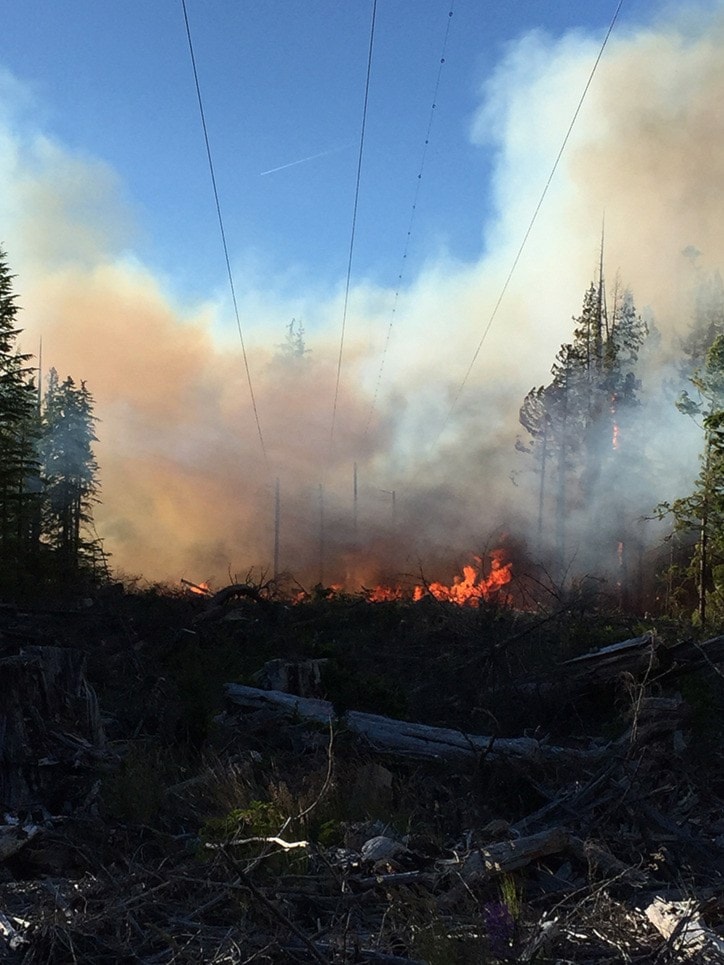Firefighters and helicopters continued to fight the Tsulquate River fire during the week of July 6. The fire, discovered July 3 just outside of Port Hardy, caused residents on Upper Carnarvon and Mayor’s Way to be placed under an evacuation order that lasted from the evening of July 3 to the evening of July 5. Heavy helicopter and ground crews worked relentlessly on both the initial fire and a one-hectare spot fire caused by blowing embers through the first weekend of the fire. The consistently hot, dry and windy weather were a significant impediment for crews.
An Emergency Response Centre was set up at the Port Hardy Civic Centre, and some evacuated residents stayed in local accommodation while the evacuation order was in effect.
Throughout the week of July 6 firefighters and helicopters worked to contain the two fires, challenged by the old-growth coastal timber. By July 9 the main fire was 50 per cent contained and the spot fire 100 per cent contained. Crews were observing the area to watch for hot spots, with more than 40 firefighters still present. Mike McCulley, fire information officer with the B.C. Wildfire Service, said July 9 that a key message to the public was to stay far away from the fire, as compromised trees, burnt root systems and dangerous limbs posed serious hazards.
By the evening of July 10, the main fire was 75 per cent contained and 16 hectares, while the spot fire remained 100 per cent contained. Crews were focusing much of their resources on the south and east flanks of the fire, and dangerous tree assessors and fallers were working on the west side of the power line. Crews were also using infrared scanners to identify hotspots. Throughout the weekend the first rain in weeks fell, and the cooler temperatures, calm winds and increased humidity helped firefighting efforts. By Sunday morning the fire was still 16 hectares in size, but 95 per cent contained, and 16 firefighters were present, working on the hotspots identified Saturday. The plan for Monday, July 13 was to use a helicopter to conduct another infrared scan to identify any hotspots deep in the ground, and re-assess each day going forward.
A team of fire cause investigators are in the Port Hardy area investigating what started the wildfire.
McCulley says that although they do not know the exact source of the fire, it clear that is was definitely human-caused. “Anytime it is not lightning it is human-caused,” he says, although he added that an investigation does not necessarily mean that answers will necessarily be forthcoming. “Sometimes we never get an answer.”
As of July 10 there were 208 active fires burning throughout the province, and 951 wildfires have scorched 268,148 hectares over the season. There is a province-wide fire ban in place.
